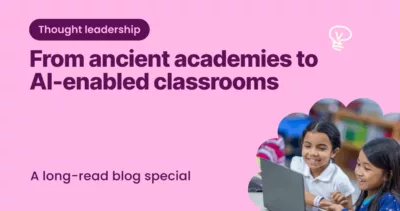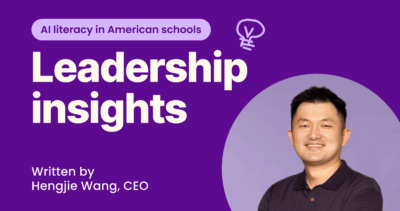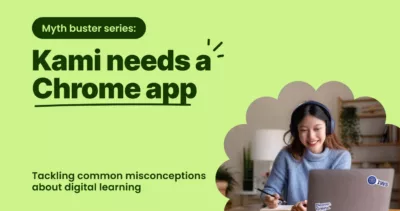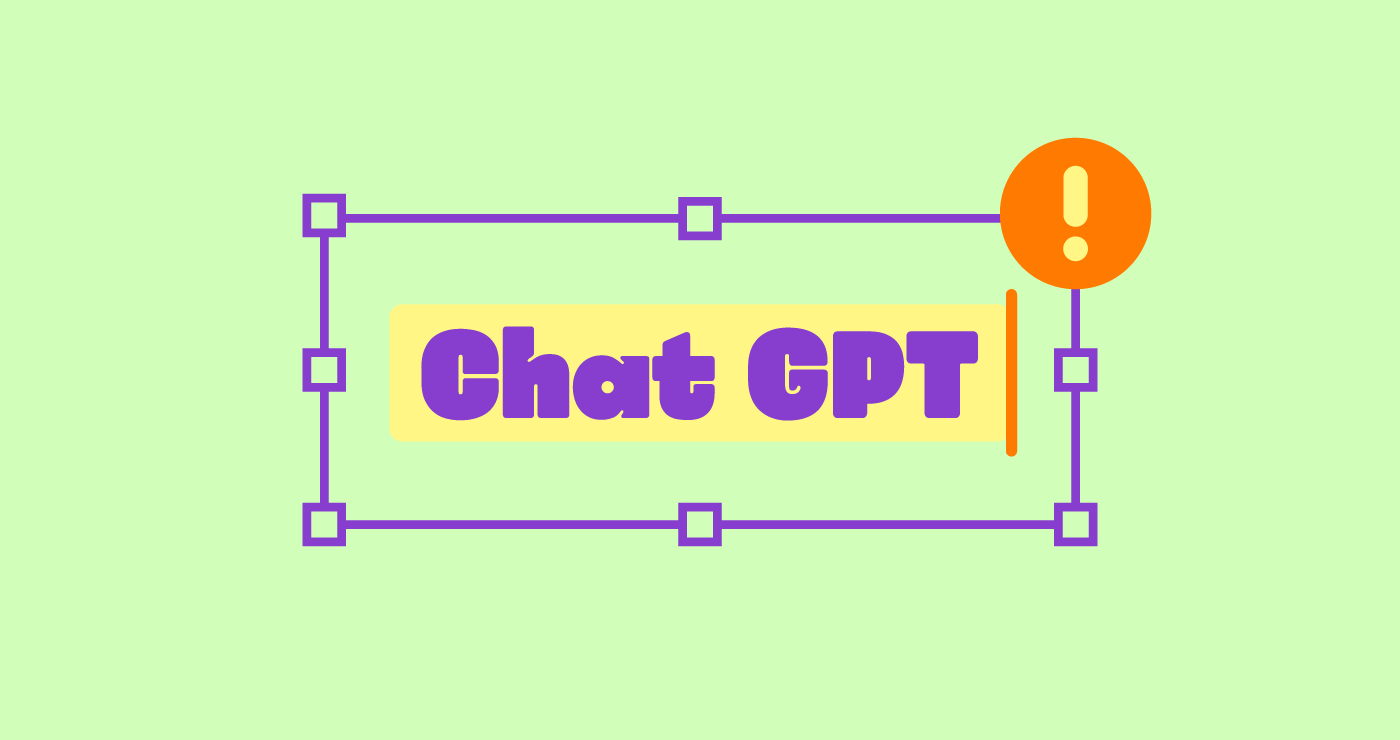This blog is all about how students might misuse ChatGPT to do their work for them. If you’d like to find out what ChatGPT can do for teachers, check out our How to Use ChatGPT in Classrooms blog.
Right, back to the students. Understandably, the appearance of an AI program that can write entire essays in seconds with minimal prompts is something that educators need to discuss. A program this powerful that is accessible to anybody with an internet connection is an unprecedented tool. Students are already using it to complete assignments, so what can be done about it?
How to spot AI use in assignments
- Sudden changes: First of all, like most academic dishonesty, the signs that a student has used ChatGPT to complete their assignment are often obvious. Typically, a student will have been turning in work of a consistent, predictable quality throughout the year. If they’ve previously struggled to write enough and make grammatical errors, and then suddenly start handing in work that meets the word-count and is completely devoid of mistakes, they may be getting help from a certAIn chatbot.
- Check the edit history: You can check the edit history (AKA version history) and see what sort of edits have been made to a block of text. If there are suspiciously large chunks of text that have been added all at once without being edited at all, it has probably been pasted in (and originated from an AI text generator). If your students submit assignments through Kami, here’s a Youtube video on how to check version history.
- Incomplete or vague responses: While ChatGPT can generate well-written responses that appear to be complete and comprehensive, it may not provide an in-depth understanding of the topic or answer the specific question asked. Teachers can look for incomplete or vague responses that lack specific detAIls or analysis.
- Unusual sources or references: ChatGPT generates responses based on large amounts of data and text, including websites and online sources. Teachers can check the sources and references cited in the student’s work to see if they are unusual or not related to the topic.
- Use plagiarism softwares: standard plagiarism detection software that checks for any copied content or suspicious similarities with other sources should work on text generated by AI.
- Use another AI program: Why not “Set a thief to catch a thief.”? GPTZero is the most consistently cited AI detection tool. All you have to do is paste in a piece of text and it will determine whether or not the text was written by a person. Although it isn’t perfect (GPTZero clAIms to be up to 90% accurate), we spent some serious time trying to fool GPTZero and found it quite difficult to deceive! I had to practically rewrite passages from ChatGPT before GPTZero would agree that it was written by a person. Similarly, I couldn’t convince it that anything I wrote had come from the mind of a machine, no matter how formulAIc I tried to be.
*Edward Tian, GPTZero’s creator, says that he is working on a more complete AI detection program. - As usual, Kami’s got you covered! Using Feature Control, you can turn off copy/paste, which effectively removes the option to use ChatGPT to write long-form responses to questions.
Of course, this list isn’t exhaustive. But there are lots of educators around the US having the AI discussion. Aaron Romoslawski, an assistant principal in Michigan, has discussed the possible ramifications of ChatGPT and other AI chatbots, here. Romoslawski and his colleagues don’t start with a punitive response, however: “We see it as an opportunity to have a conversation.”
So, what can educators do about AI? Here are some tips from experts and educators on the potential AI problem.
Make your expectations explicitly clear
As with regular assignments and classroom work, students need to know exactly what constitutes cheating, and whether AI tools are involved or not. Every school or district should devise clear policies around academic dishonesty and what that means specifically. Schools can decide how much or how little students can rely on AI to make cosmetic changes or do research, and should make that clear to students.
Talk to students about AI in general and ChatGPT in particular
One of the best things you can do to prevent AI language models causing havoc in your classroom is to address the elephant in the room. Set some time aside to talk about ChatGPT as a tool and AI in general. Questions could include: Have you heard of ChatGPT? What are other students saying about it? What do you think it should be used for? Discuss the promises, and potential pitfalls, of artificial intelligence. Getting ahead of AI software instead of hoping your students never discover it might be the better approach.
Ask the right questions
A big part of what still separates ChatGPT from human writers is its ability to express opinions and critical thinking. One way teachers can combat students using ChatGPT, or any other language model to cheat, is to design assessments that require critical thinking and creativity, rather than simply testing rote memorization. This could involve asking open-ended questions that require students to apply concepts they‘ve learned to new situations or requiring them to solve complex problems that cannot be answered by simply copying and pasting text from the internet.
Encourage your students to use ChatGPT in (certAIn) assignments!
Unlock your students’ critical thinking skills with ChatGPT! Instead of just asking them to write an essay, why not challenge them to use this powerful AI language model to answer a major question or tackle a key challenge from a specific topic from your curriculum? It’s a fun and innovative way to explore new perspectives and push their learning to the next level.
Once they’ve used ChatGPT to craft their response, encourage your students to comment on the answer provided. They can use their critical thinking skills to evaluate the quality and depth of the AI-generated response, and compare it with their own ideas and insights.
As they reflect on their learning, your students may be surprised at what they discover! ChatGPT’s vast knowledge and sophisticated algorithms can shed new light on even the most complex topics. Have them jot down some of the key insights they gAIned from using ChatGPT, and encourage them to share their findings with the class.
However, ChatGPT does keep a record of everything you type into it so make sure you and your students are careful and avoid typing in any personal or confidential information.
In conclusion: Discuss, don’t fuss!
“The initial reaction was ‘OMG, how are we going to stem the tide of all the cheating that will happen with ChatGPT?” sAId Devin Page, a technology specialist with the Calvert County Public School District in Maryland. Now there is a growing realization that “this is the future” and blocking it is not the solution. Being familiar with the resources avAIlable to detect the use of ChatGPT and similar AI programs, Page believes that regulation is the solution, not prohibition. “I think we would be nAIve if we were not aware of the dangers this tool poses, but we also would fAIl to serve our students if we ban them and us from using it for all its potential power,” He went on to say.
The arrival of a highly-literate program doesn’t have to be a terrible harbinger of doom. When pocket calculators became cheap and easy to produce, many people worried that it meant our arithmetic skills were soon-to-be-extinct. Not only did this not happen, educators found a way to work with and incorporate calculators into the curriculum. Now, with access to calculators, modern students are expected to perform much more sophisticated calculations than their parents and grandparents were in school. Similarly, If we approach ChatGPT and other language models with an AIm to understand them, this technology can add to our learners’ education, not diminish it.
You may also like

From ancient academies to AI-enabled classrooms

Improving AI literacy in American schools


